02.010.0312: Base of Wall – Single Wythe Block, Flashing at Inside Face
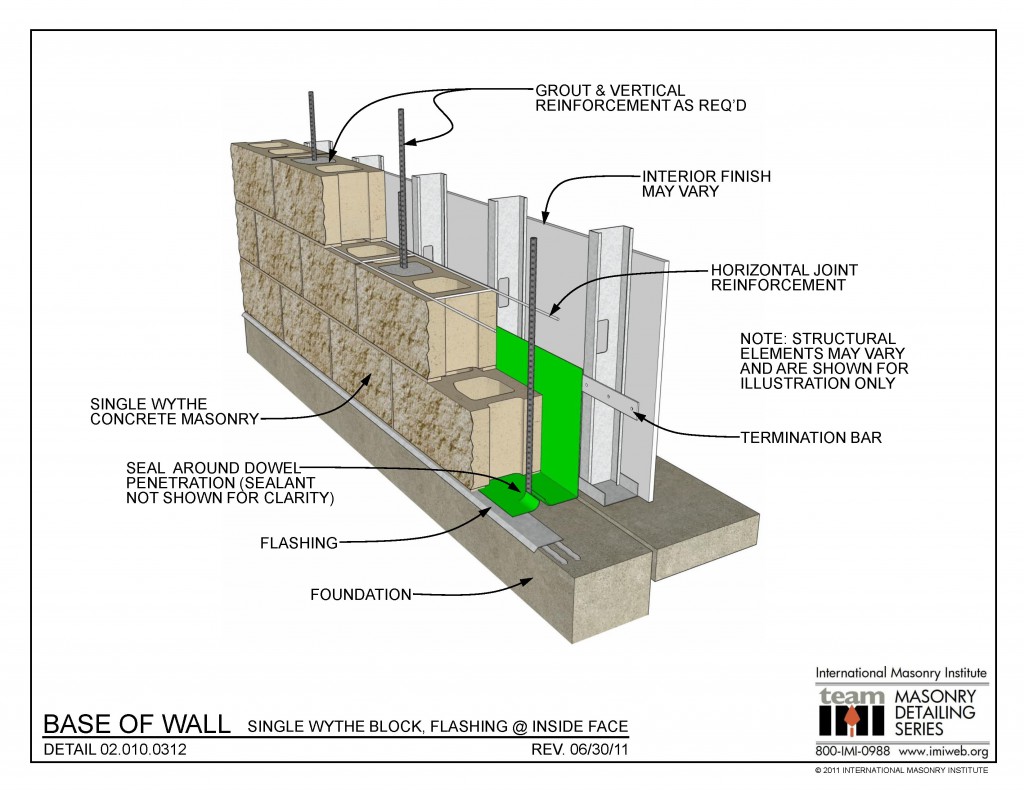
This detail shows an 8” (nominal) split face concrete masonry (CMU) wall, base of wall condition. There is an interior finish of steel studs and gypsum board, allowing the flashing to return at leaset 8″ vertically and then be anchored to the interior face of the CMU via a termination bar, concealing the flashing assembly […]
06.110.0613: Tile Steam Room Assembly | Masonry or Concrete, Mud Walls, Mud Floor
This detail, based on TCNA method SR613, illustrates a tiled steam shower or steam room assembly with masonry or concrete structure, mortar bed walls, and a mortar bed floor. The ceiling slopes 2″ per foot to prevent dripping of condensate. The bonded waterproof membrane must be continuous and must adequately limit vapor transmission. If bonded […]
06.EJ171.C: Tile Expansion Joint | Floor, Unbonded Reinforced Mortar Bed
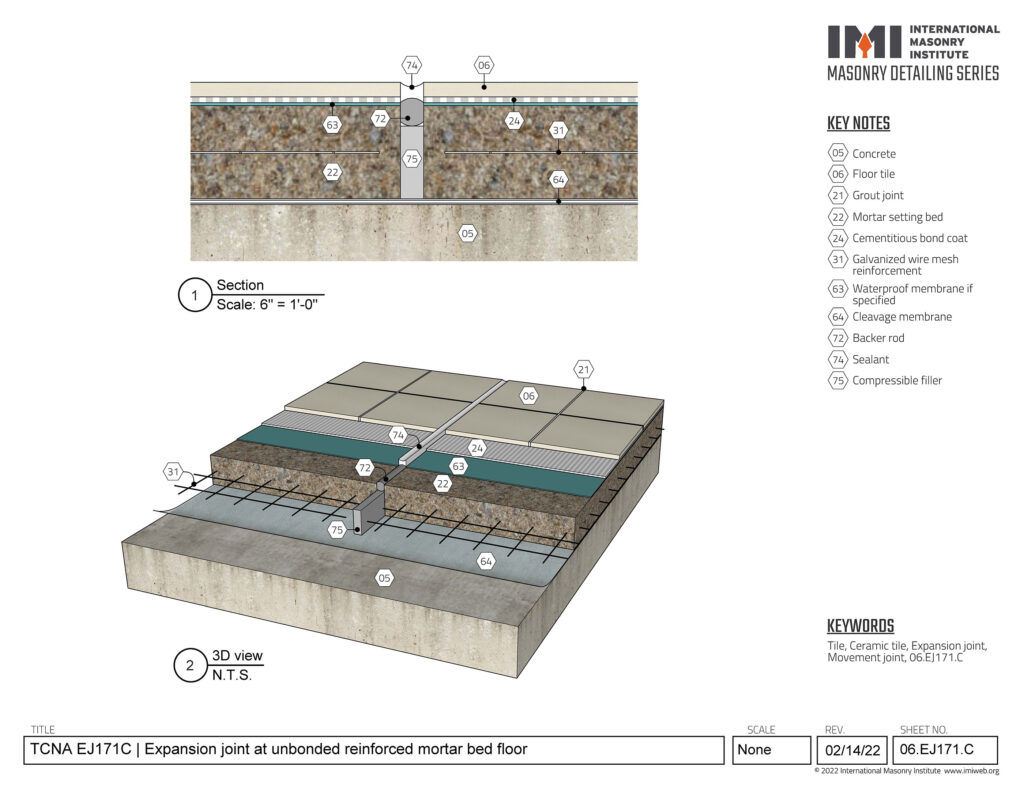
Expansion joints in the field of tile floors are essential and required in order to accommodate building movements and to prohibit cracks in the substrate from telegraphing to the tile finish. This detail illustrates an expansion joint in tile installed over an unbonded reinforced mortar bed on a concrete floor. A cleavage membrane allows independent […]
06.110.0421C: Curbless Tile Shower Assembly | Metal studs, CBU Backing, Bonded Waterproof Membrane, 2-stage drain
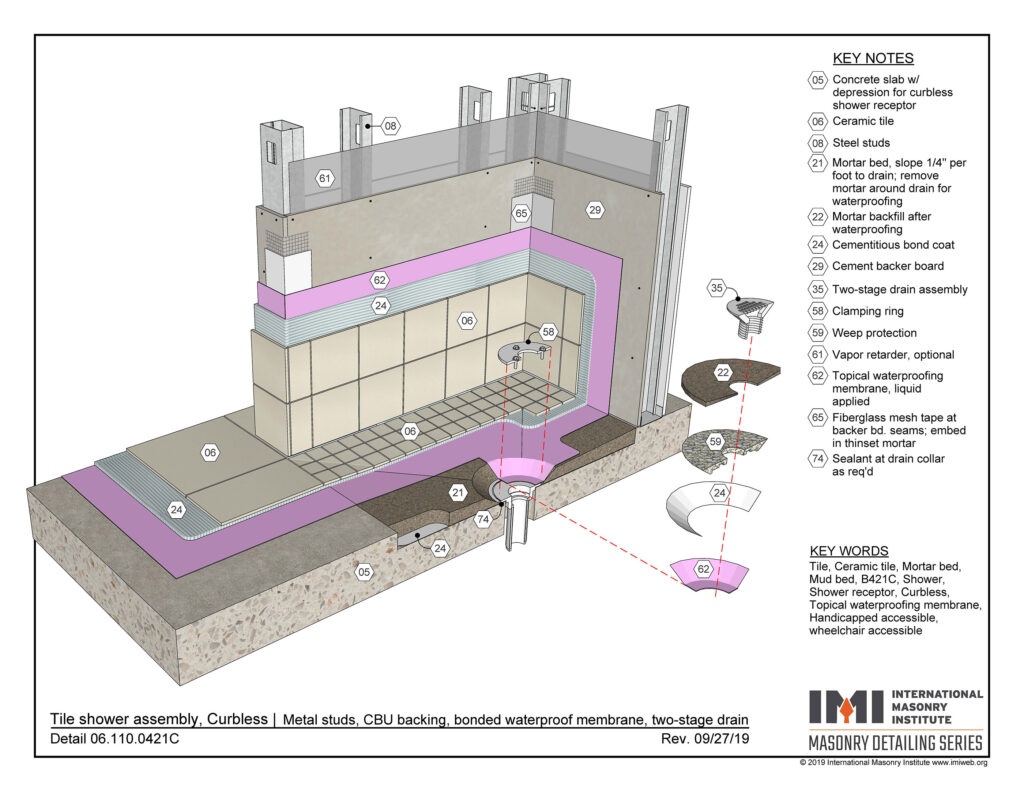
This detail shows a tiled shower assembly based on TCNA method B421C. It illustrates metal stud backing with cement backer board. This shower has no curb for handicapped accessibility. The receptor comprises a mortar bed with 1/4″ per foot slope to drain and a topical bonded waterproof membrane which ties into a 2-stage drain with […]
06.EJ171.N: Tile Perimeter Expansion Joint | Floor To Wall
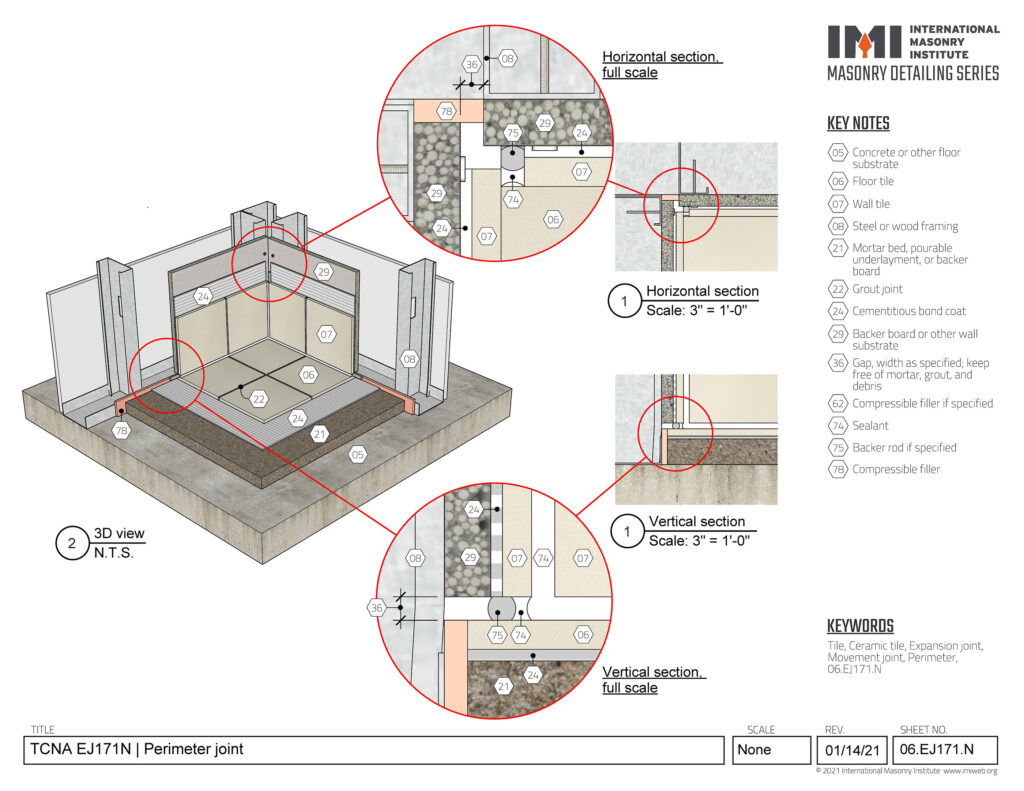
Perimeter expansion joints in tile assemblies essential and required in order to accommodate building movements and to prohibit cracks in the substrate from telegraphing to the tile finish. Perimeter expansion joints are required at all changes in plane and terminations of the tile. This detail illustrates a perimeter expansion joint where the tile floor terminates […]
02.010.0311: Base of Wall Detail – Single Wythe Block, Split Base Course
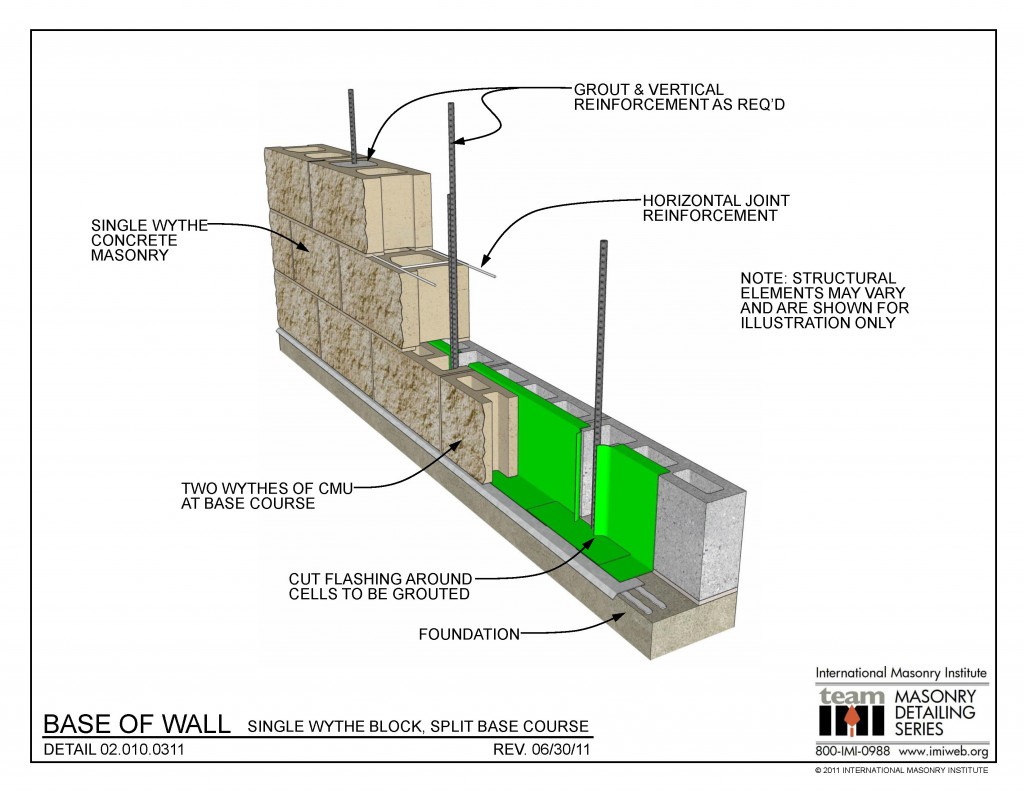
This detail shows an 8” (nominal) split face concrete masonry (CMU) wall, base of wall condition. The base course is divided into two wythes of 4” (nominal) CMU to allow for a vertical upturn to the flashing. The flashing is shown as a flexible material for the through-wall portion, transitioning to a sheet metal drip […]
02.010.0401: Sill Detail – Single Wythe Block

This detail shows an 8” (nominal) split face concrete masonry (CMU) wall, window sill condition. Flashing is provided below the masonry sill, returning vertically at the end termination to form an end dam. Ladder-type horizontal joint reinforcement is placed at 16” o.c. vertically in the wall, or as required. 3D Detail
02.120.0751: Plank at Bearing Wall – Intermediate Elevation
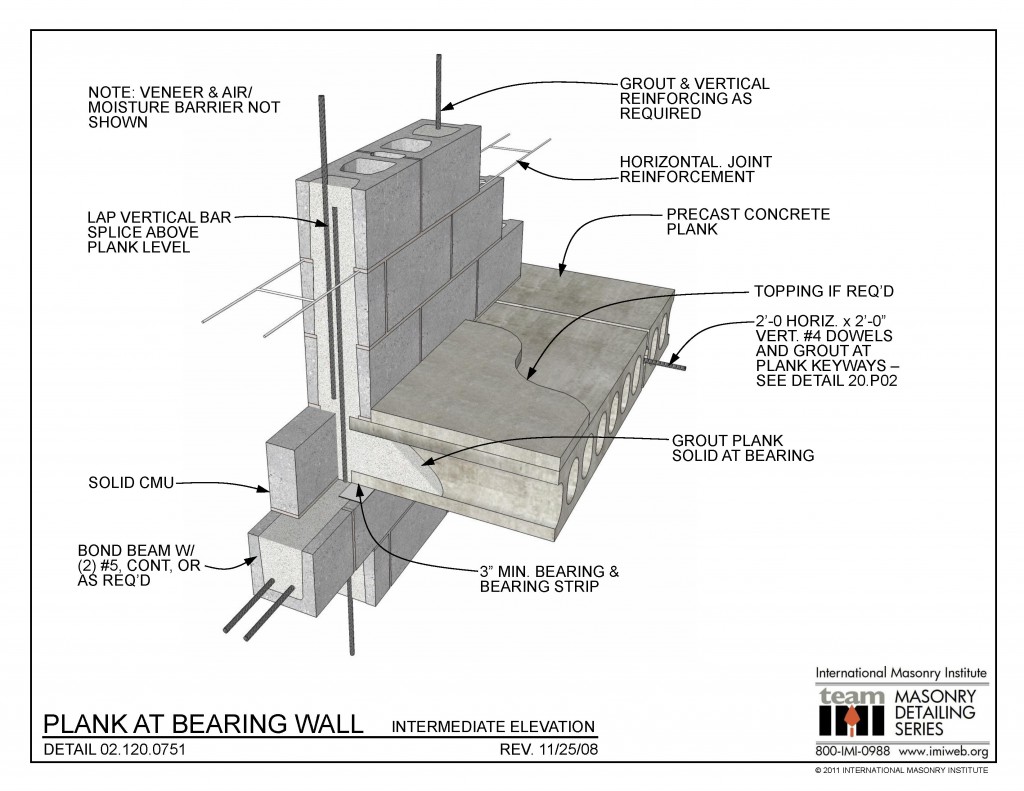
This detail shows a precast concrete plank bearing at an exterior CMU wall. The wall has horizontal joint reinforcement at 16″ o.c. vertically. The plank has reinforcement and grout at the keyways, and the floor bears on a CMU bond beam. The wall is grouted and reinforced vertically as required, and the bars are lapped […]
02.010.1301: Control Joint – Preformed Gasket
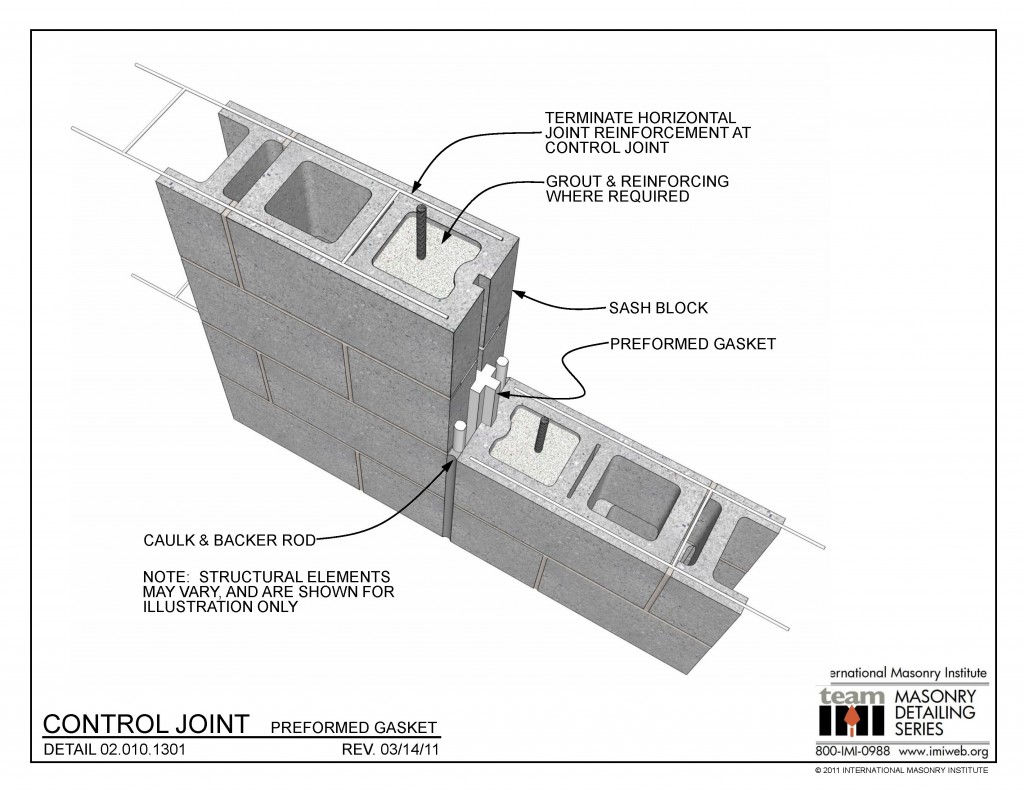
This detail shows specially shaped sash block being used at the vertical control joint, to allow for insertion of a preformed gasket. The gasket is a rigid material, allowing in-plane shrinkage of the block, while providing some resistance to lateral loads. There is horizontal joint reinforcement at 16″ o.c. vertically in the wall, interrupted at […]
02.010.1302: Control Joint – Grout Fill
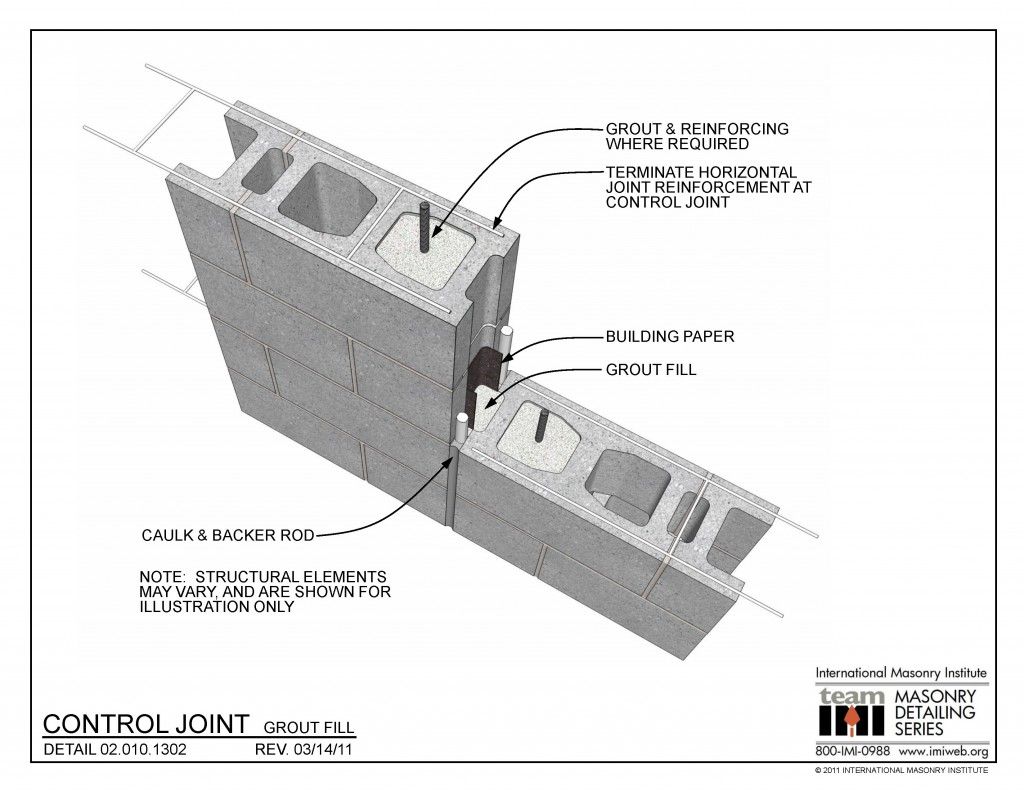
This detail shows standard CMU being used at the vertical control joint, with vertical grout fill used to key in the block. The building felt breaks the bond at one side of the grout fill, to allow for shrinkage of the block, while providing some resistance to lateral loads. There is horizontal joint reinforcement at […]
